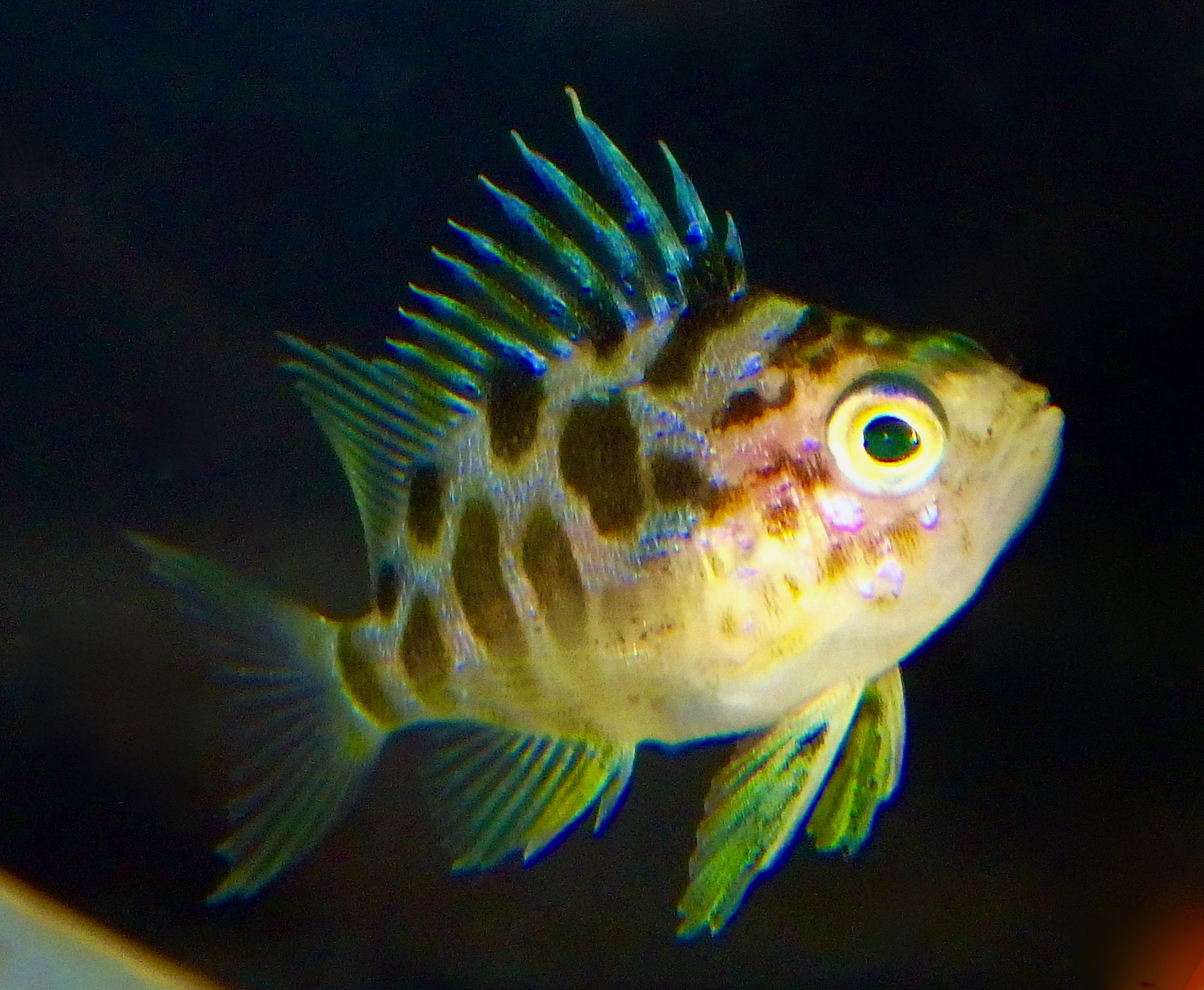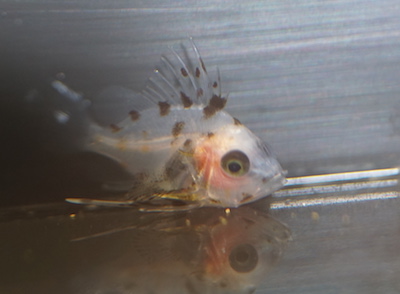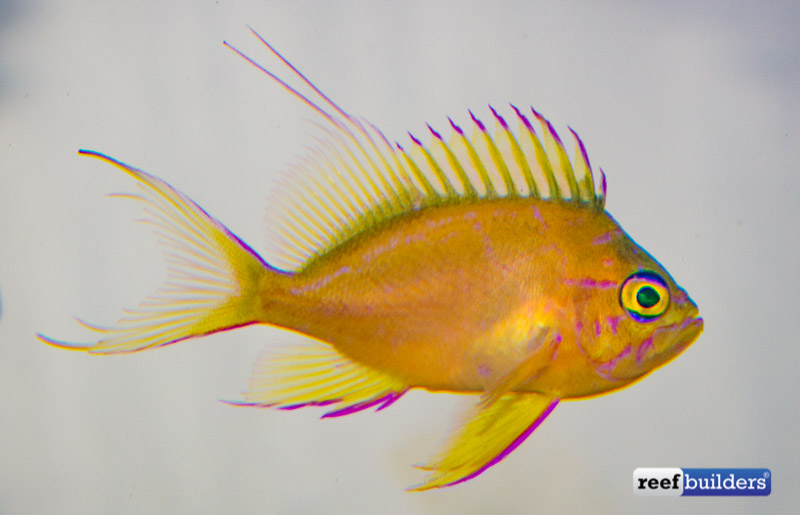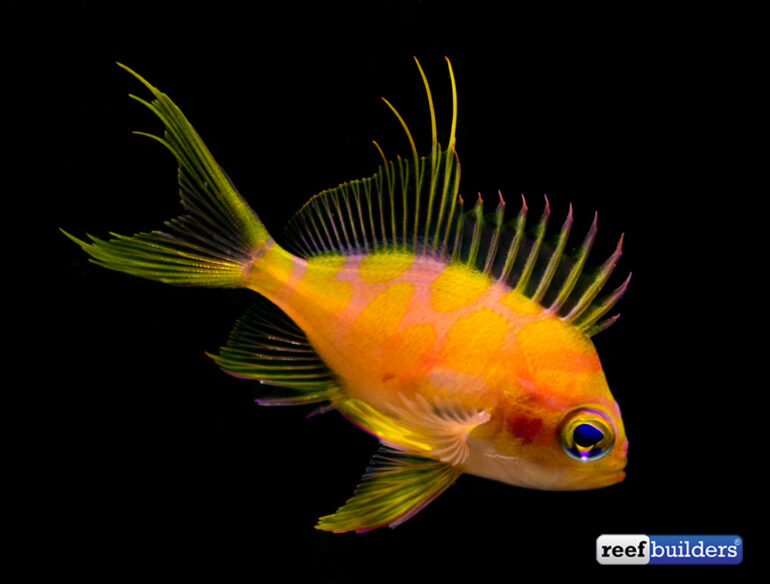Biota Palau is no stranger to being first to captive breed some popular tropical marine fish and the Borbonius anthias is the latest species to be added to their catalog. Their captive bred mandarins have revolutionized the experience of keeping Synchiropus splendidus in a home aquarium and now they’re doing it again with Odontanthias borbonius.

The broodstock (parents) of the world’s first successfully captive bred borbonius anthias were collected in the deepwaters of Palau by the California Academy of Science’s own deep diving team. These fish were kept in a special cold and dim aquarium environment to replicate the habitat where they came from.

Oddly enough it was a cooling malfunction that initiated the spawning of Biota’s borbonius anthias and turned them into breeders. While they were being kept in fairly cool water, it was only when the water temperature rose to almost 80 degrees that the wild borbonius began spawning, giving Biota Palau the opportunity to try and raise some larvae, which they successfully did.
The spawning period resulted in ‘only’ 80 viable eggs, we don’t know how many of these were reared to marketable size but Biota plans to make these available in limited quantities on their new Ocean Oddities website launching this weekend. The happy accident resulted not only in the successful spawning and rearing of the borbonius anthias but it could also represent a trigger for spawning other deep reef fish species. This triumph represents the second species of Odontanthias to be captive bred, joining Karen Brittain’s home-grown yellow fin anthias of successfully captive bred species from this illustrious genus.

Borbonius anthias were a highly sought-after ‘Holy Grail’ species for many years until they finally started becoming available from deepwaters of Indonesia and the Philippines. Due to being sourced from deep water reef habitats, these wild borbonius have a mixed track record in captivity. So now that Biota will be offering 100% captive bred borbonius anthias, reefers will have the option to support a more sustainable source for this charismatic deep reef fish.



